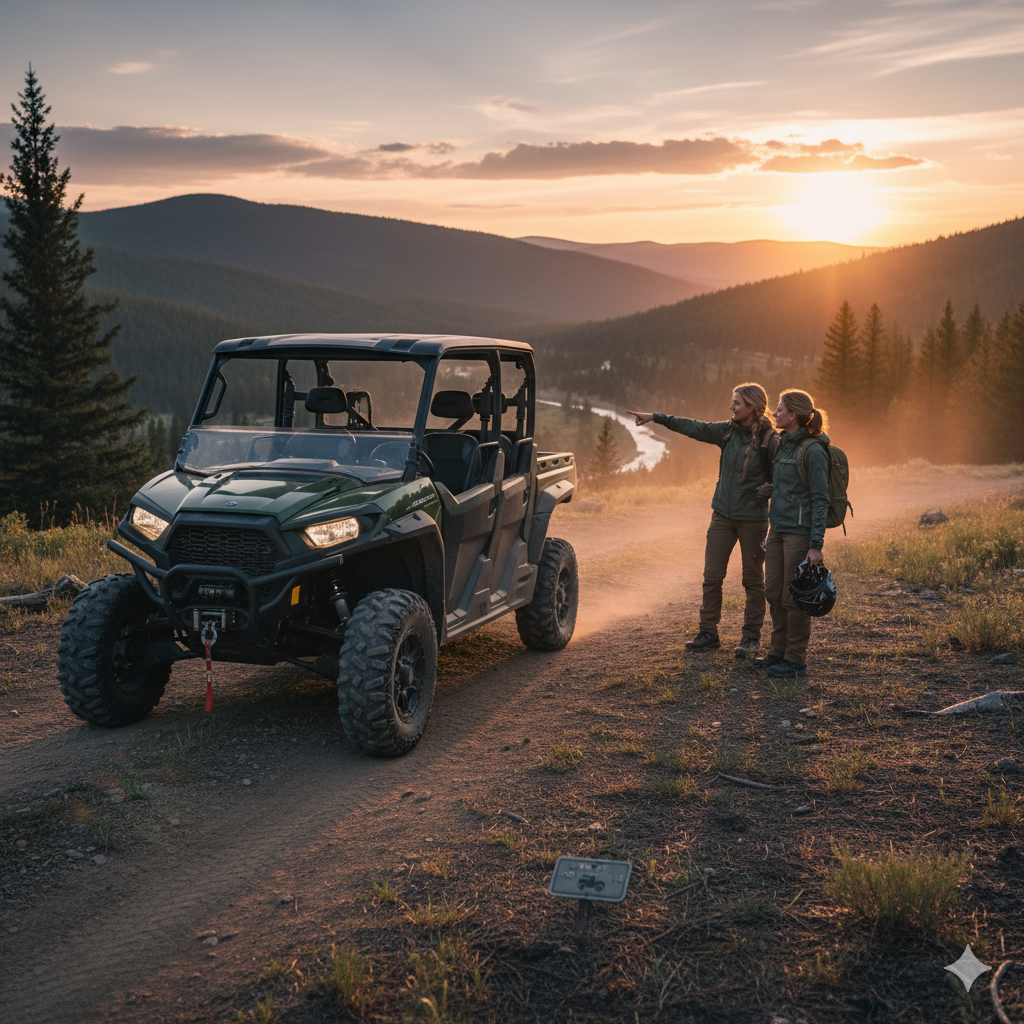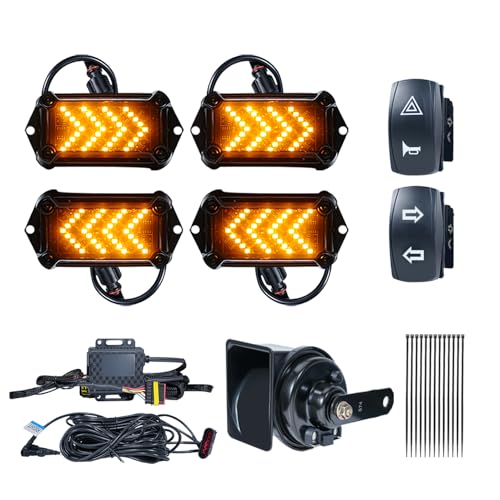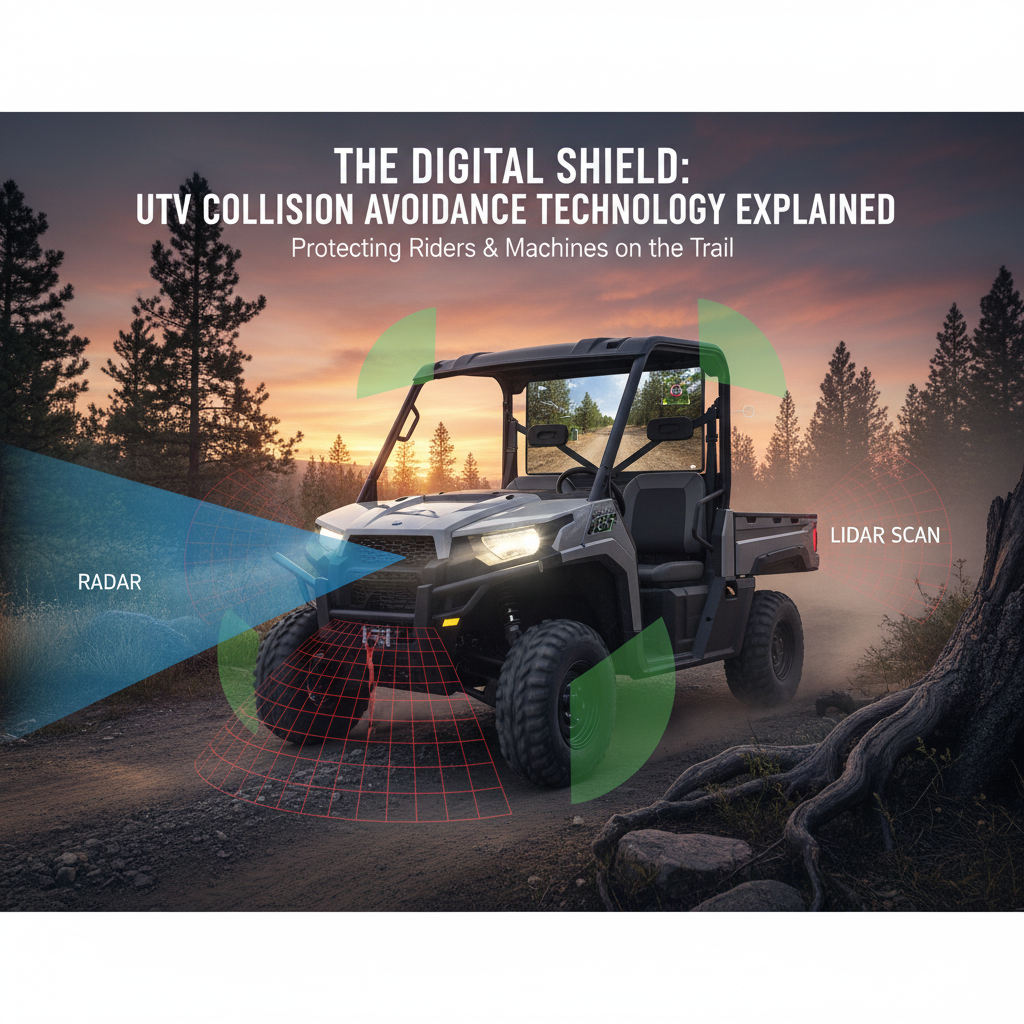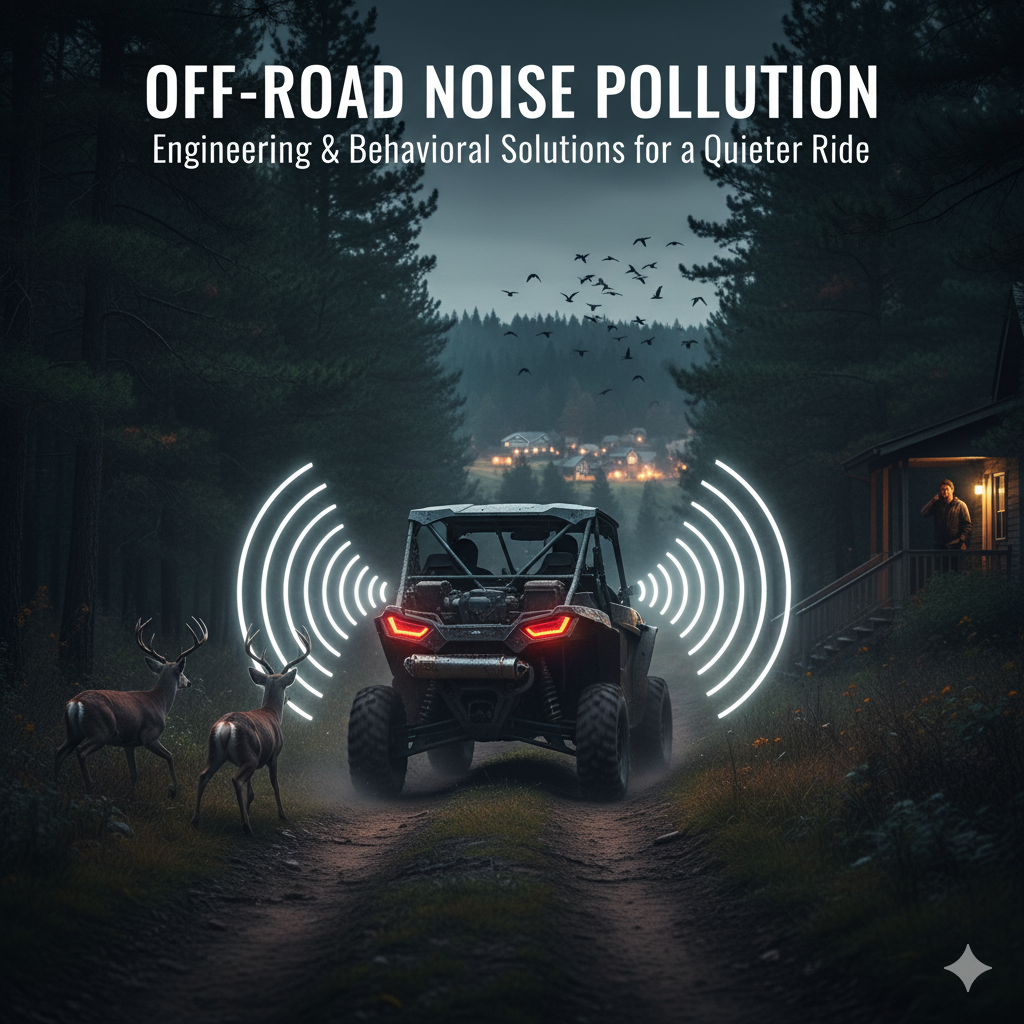The vast, open spaces of the backcountry are a magnet for the UTV community, offering unparalleled freedom and adventure.
Yet, this freedom is not absolute; it is governed by an unwritten contract with the land itself, a commitment to respect and preserve the natural environment.
The philosophy of Leave No Trace (LNT) is the ethical framework for fulfilling this contract, ensuring that our presence in the wilderness is as ephemeral as possible.
While LNT is often associated with hiking and camping, its principles are profoundly relevant—and arguably more critical—for UTV practices, given the potential for greater impact on the terrain.
Mastering LNT is the mark of a responsible off-roader, a commitment to preserving the beauty and integrity of the trails for all who follow.
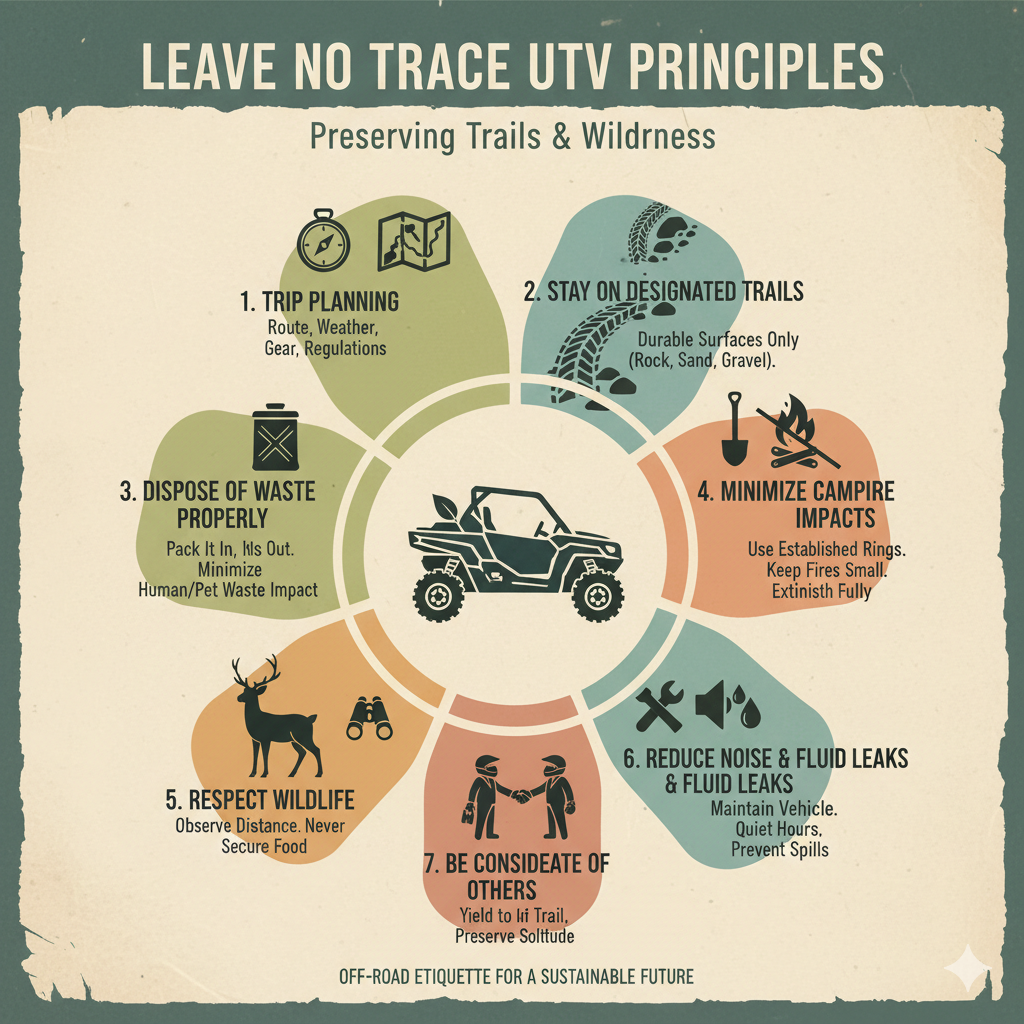
Principle 1: Plan Ahead and Prepare
The foundation of a low-impact UTV trip is preparation, as a well-planned adventure minimizes the need for reactive, potentially damaging decisions in the field.
Know the Regulations and Terrain
Before setting out, a responsible rider must thoroughly research the area’s regulations, including open and closed seasons, permit requirements, and specific restrictions on vehicle use [1].
This includes identifying designated UTV trails and understanding the local terrain and weather patterns, as driving on saturated trails is a major source of environmental damage.
Knowing the route’s difficulty and potential hazards allows the rider to pack the appropriate gear, reducing the likelihood of a breakdown that could necessitate a disruptive and damaging recovery operation.
The use of digital mapping tools pre-loaded with official trail data is a key component of modern LNT planning, ensuring the rider is always aware of their location relative to designated routes and sensitive areas.
Vehicle Readiness and Contingency Planning
Preparing the UTV itself is a critical LNT practice, involving a thorough pre-trip inspection to ensure there are no fluid leaks, that the exhaust system is intact and compliant with noise regulations, and that all necessary repair tools are onboard.
Contingency planning includes carrying a comprehensive first-aid kit, emergency communication devices, and a strategy for self-recovery without damaging the trail or surrounding vegetation, such as a winch and appropriate anchor points [2].
A dedicated spill kit with absorbent pads and disposal bags is a non-negotiable item for any responsible UTV enthusiast, ensuring that accidental fluid leaks can be contained and removed immediately.
Principle 2: Travel and Camp on Durable Surfaces
This principle is the cornerstone of LNT for UTVs, directly addressing the physical impact of the vehicle on the land, which is the most visible form of damage.
Stay on Designated Trails and Respect the Corridor
The single most important practice is to never drive off the designated trail, as designated trails are engineered to withstand vehicle traffic and are considered the most durable surface in the area [3].
Driving off-trail, or “trail blazing,” creates new, unsustainable paths that quickly erode, damage sensitive vegetation, and contribute to habitat fragmentation, and respecting the width of the trail is non-negotiable.
Riders must also be mindful of the trail corridor, avoiding driving on the shoulders or cutting corners, which leads to trail widening and the destruction of adjacent vegetation.
Avoid Wet and Muddy Conditions and Practice “Tread Lightly”
Wet and muddy trails are highly susceptible to damage, as driving through mud creates deep ruts that channel water, accelerating erosion and making the trail unpleasant or impassable for future users.
If a trail is saturated, the LNT practice is to turn around and find an alternative route or wait for the trail to dry, demonstrating a commitment to the long-term health of the trail system [4].
If a muddy section must be crossed, drive straight through the center to avoid widening the trail, but the best practice is always avoidance.
The broader philosophy of “Tread Lightly” emphasizes minimizing impact by reducing speed, avoiding wheel spin, and using the lowest effective gear, all of which reduce the physical stress placed on the trail surface.
Camping on Established Sites
When camping, UTVs should be parked on established, hardened surfaces, and all camping activities should be confined to existing campsites.
Creating new campsites or driving over vegetation to access a preferred spot is a direct violation of the durable surfaces principle, leading to long-term scarring of the landscape.
In areas without established sites, the UTV should be parked on the most durable surface available, such as rock or dry gravel, and the camp should be set up in a way that minimizes disturbance to vegetation and soil.
Principle 3: Dispose of Waste Properly
The UTV community must adhere to the fundamental LNT tenet of “Pack it in, Pack it out,” ensuring that all waste, regardless of size, is removed from the wilderness.
Managing Human and Vehicle Waste
All trash, including food scraps, packaging, and personal hygiene products, must be carried out of the wilderness, and for UTVs, this extends to vehicle-related waste.
Any broken parts, used oil filters, or spilled fluids must be contained and removed from the site, and carrying a small spill kit with absorbent materials is a responsible practice for managing accidental fluid leaks [5].
Human waste should be disposed of according to LNT guidelines, typically by burying solid waste in a cathole 6 to 8 inches deep and at least 200 feet from water, camp, and trails, or by packing it out in designated waste bags.
The practice of “grey water” management is also critical, ensuring that dishwater and wash water are dispersed over a wide area, away from water sources, to allow the soil to filter out any contaminants.
Principle 4: Leave What You Find
The wilderness is a museum of natural and cultural history, and nothing should be removed or altered, preserving the natural state of the environment.
Minimize Alterations to the Environment and Prevent Invasive Species
LNT UTV practices dictate that riders should resist the urge to build cairns, carve initials into trees, or collect natural objects like rocks, plants, or artifacts, as the goal is to leave the area exactly as it was found [6].
This also means avoiding the introduction of non-native species, such as invasive seeds carried on the UTV’s tires or undercarriage, by cleaning the vehicle before entering a new area.
The practice of “PlayCleanGo” involves inspecting and cleaning the UTV, gear, and clothing to remove all mud, seeds, and debris before moving from one trail system to another, a vital step in preventing the spread of invasive species.
Principle 5: Minimize Campfire Impacts
While UTVs are often used for day trips, multi-day overlanding adventures involve camping, where fire management is a critical LNT concern that requires careful attention.
Use Established Fire Rings and Portable Stoves
The most responsible practice is to use a lightweight, portable stove for cooking, which leaves no trace, but if a campfire is permitted and necessary, it should only be built in an established fire ring or a designated fire pan [7].
Fires should be kept small, using only dead and downed wood that can be broken by hand, and must be completely extinguished and cold to the touch before leaving the site, ensuring no embers remain.
In high-use areas, the use of a “fire pan” or a metal tray elevated off the ground is the preferred method, as it prevents the fire from scorching the soil and leaves no visible trace of the fire pit.
Principle 6: Respect Wildlife
UTV riders have a unique responsibility to minimize their impact on the animals that inhabit the trails, as the noise and presence of a vehicle can be highly disruptive.
Observe from a Distance and Control Noise
Wildlife should always be observed from a distance, and riders should never approach, feed, or follow animals, as this can alter their natural behavior [8].
If an encounter occurs, the UTV should be turned off or idled quietly, and the rider should wait for the animal to move away on its own, demonstrating respect for the animal’s space.
Controlling noise, through proper maintenance and responsible driving, is a key component of respecting wildlife, as it minimizes stress and disruption to their natural behaviors.
The use of low-intensity lighting at night, such as amber or red lights, is another critical practice to minimize the disruption of nocturnal wildlife patterns.
Principle 7: Be Considerate of Other Visitors
The wilderness is a shared resource, and the UTV community must coexist peacefully with hikers, bikers, equestrians, and other users, fostering a spirit of cooperation.
Yielding and Trail Etiquette
A responsible UTV rider understands and practices proper trail etiquette, which often involves yielding to non-motorized users, as they are often less able to move quickly [9].
When passing, slow down, turn off the engine if necessary, and offer a friendly greeting, as this simple act of courtesy goes a long way in fostering a positive relationship between motorized and non-motorized user groups.
The general rule of thumb is that motorized vehicles yield to all other users, and downhill traffic yields to uphill traffic, a simple hierarchy that promotes safety and courtesy on multi-use trails.
Managing Dust and Speed
Excessive speed on dry trails creates dust clouds that can obscure visibility and be a major nuisance to other trail users and adjacent landowners.
LNT practice dictates that riders should moderate their speed to minimize dust, especially when passing other users or traveling near residential areas.
This simple act of courtesy is a powerful tool for reducing conflict and demonstrating a commitment to shared use of the public lands.
The principles of Leave No Trace are not a set of rigid rules but a moral compass for the responsible UTV enthusiast, guiding every decision made on the trail.
By integrating these practices into every aspect of the off-road experience, the UTV community can demonstrate its commitment to conservation, securing the future of the trails and the freedom to explore them.
References
[1] Leave No Trace Center for Outdoor Ethics. (n.d.). Plan Ahead and Prepare. Retrieved from [URL for LNT Principle 1]
[2] Tread Lightly! (n.d.). Tread Lightly! Principles. Retrieved from [URL for Tread Lightly! principles]
[3] Leave No Trace Center for Outdoor Ethics. (n.d.). Travel and Camp on Durable Surfaces. Retrieved from [URL for LNT Principle 2]
[4] U.S. Forest Service. (n.d.). Off-Road Vehicle Use and Trail Damage. Retrieved from [URL for USFS resource]
[5] Leave No Trace Center for Outdoor Ethics. (n.d.). Dispose of Waste Properly. Retrieved from [URL for LNT Principle 3]
[6] Leave No Trace Center for Outdoor Ethics. (n.d.). Leave What You Find. Retrieved from [URL for LNT Principle 4]
[7] Leave No Trace Center for Outdoor Ethics. (n.d.). Minimize Campfire Impacts. Retrieved from [URL for LNT Principle 5]
[8] Leave No Trace Center for Outdoor Ethics. (n.d.). Respect Wildlife. Retrieved from [URL for LNT Principle 6]
[9] Leave No Trace Center for Outdoor Ethics. (n.d.). Be Considerate of Other Visitors. Retrieved from [URL for LNT Principle 7]

